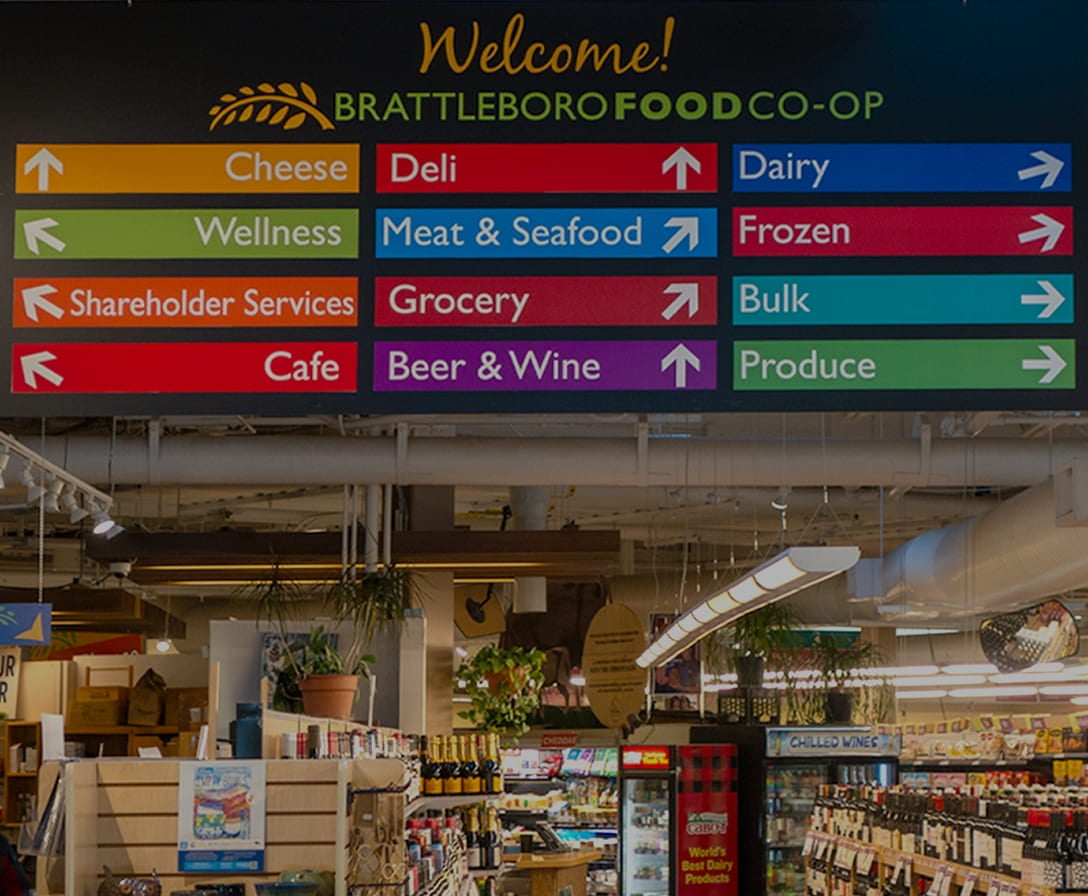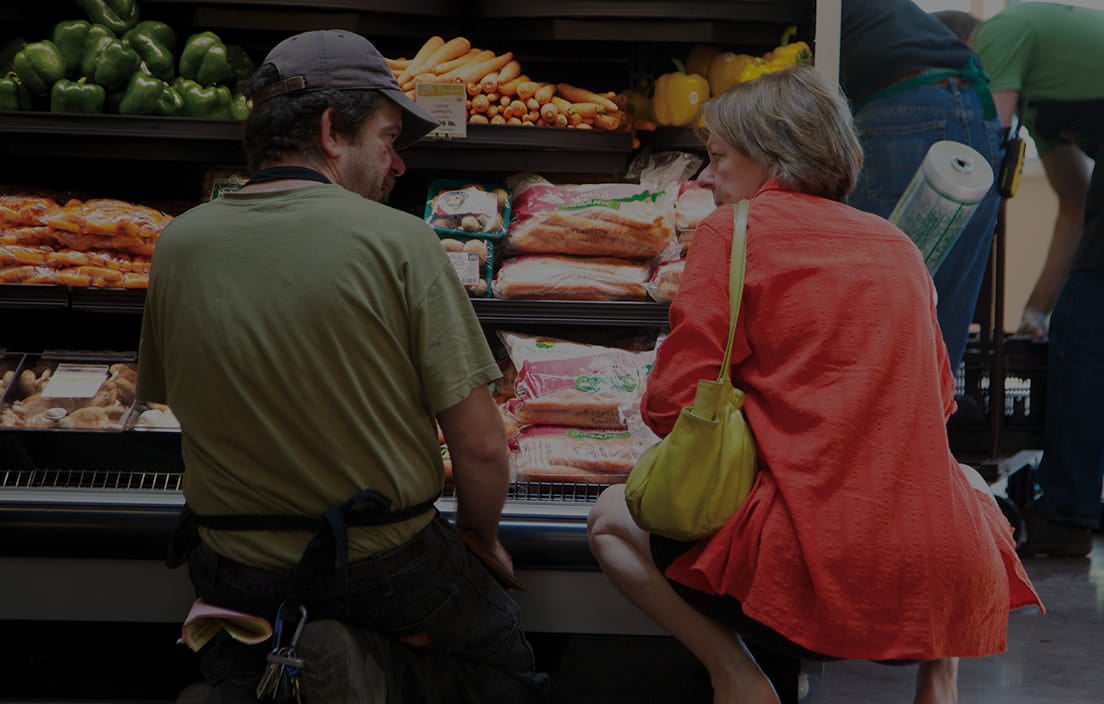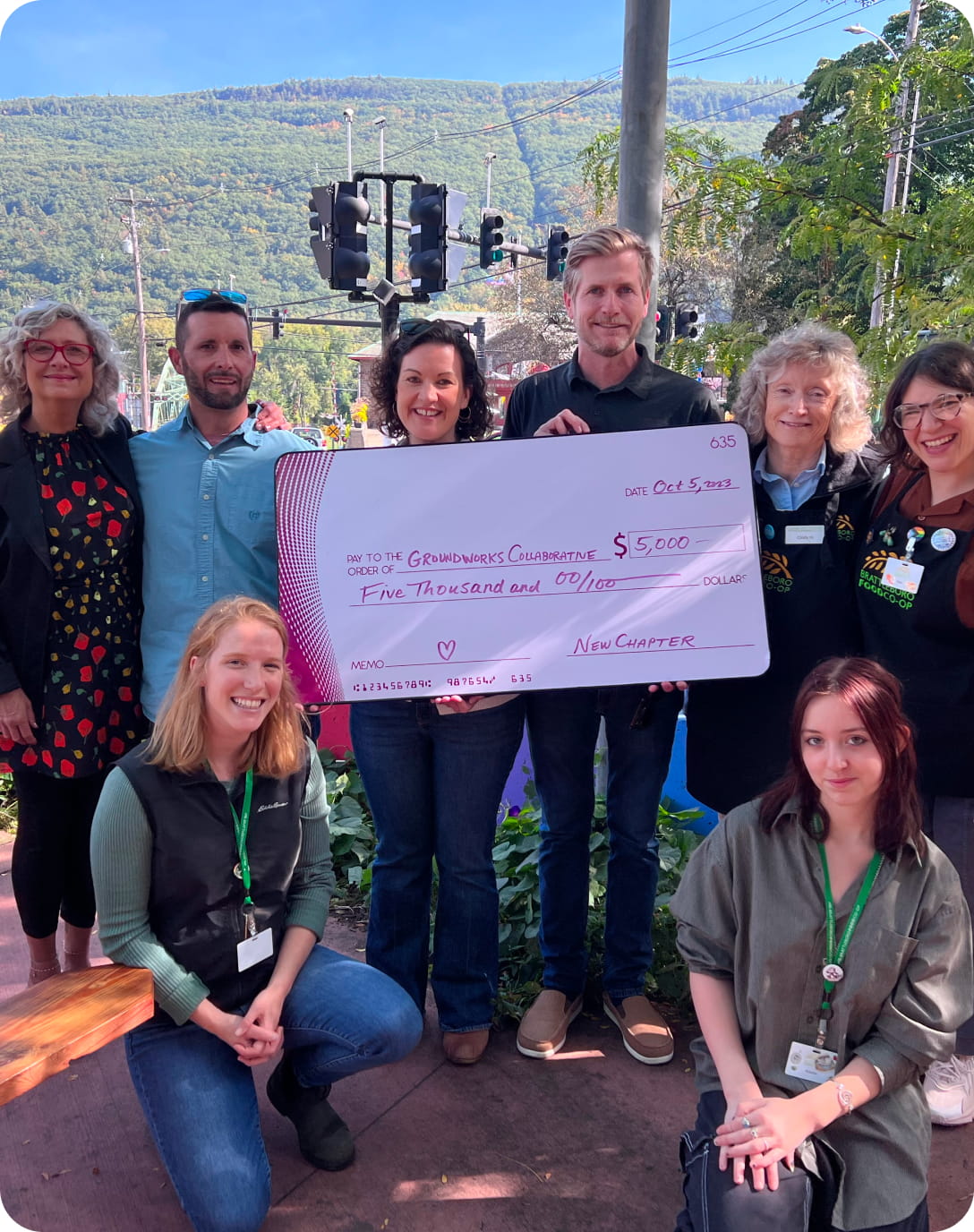AlpineGlo Farm
There is a way for professional dairy farmers to have truly loving partnerships with their animals. This is the central notion of AlpineGlo Farm that Rachel Ware wants to convey. Plus, milk from animals who are relaxed, secure, and respected invariably makes the best cheese. Aspiring animal-loving goatherds, pay attention!
Driving into AlpineGlo Farm in Westminster, VT was like entering a fairy-tale world – a beautiful gray horse amid green grass on a hillside, fit for an elfin princess, was the first thing Beth, Marlene and I noticed as we drove up the hill. Later, Rachel, the sole owner and cheesemaker of AlpineGlo, told us that magnificent horse is in a pasture by himself because “he’s a total pig about his food,” with the same tone you’d use to describe an annoying uncle. This is AlpineGlo: a very down-to-earth paradise, and home to Rachel, her husband Andy, their two daughters Lilly and Virginia, two horses, two miniature ponies, a couple of pigs, a few ducks, a bunch of chickens, two dogs, three cats, and about two dozen goats who provide the milk for AlpineGlo’s delicate, creamy, incredibly fresh goat cheeses.
Rachel once vowed she would never run a dairy farm, because of her objections to how the animals are typically treated. She studied animal science in college, and expected to work with horses. She’s been riding since she was four years old, and still trains horses today. Chesapeake is the horse that started it all – they’ve been together since he was four, and together they participated in junior Olympics technical riding competitions. Now at thirty, he’s quite old by horse standards, and it was his retirement that started the cheese ball rolling. Rachel got goats as companions for him, which is common practice. Chesapeake and his new friends got along so well that he started acting like a goat, reaching up into trees to nibble leaves! The family used the goats’ milk just for their family to drink at first, but over the years, one goat became a few, and eventually cheesemaking became a natural next step.
Rachel described the connection between herself and her animal companions in ways that could seem fantastical, but to her it’s all just a part of farm life. She talked about the way they know what she wants them to do with a level of sensitivity that goes beyond physical or verbal commands or direct instruction. I was moved by her description of how this affects their day-to-day work together. For instance, if one of the goats seems like they’re struggling and needing extra attention, she makes space for them to be close by. They might want to be near her but not touched, others will want to be petted, and others still may want to be cradled and loved. She lets them guide her to whatever their needs might be in the moment. Each goat in the herd has a name, unique personality, and relationship with Rachel that she fully respects. She knows from a lifetime of working with these intelligent and sensitive beings that “there’s no difference between the species. We’re all the same.”
The goats get milked twice a day, and eat their morning and evening meals while the milking machine is doing its work. Some goats are happy to allow the process to continue after they’ve finished their supper, but some are more impatient. Rachel arranges the order to enable the antsier ladies to move along more quickly. There’s no forcing or fighting.
The building where Rachel makes the cheese is quite small – in fact, everything about AlpineGlo is small. Rachel is essentially a one-person show, from milking the goats to stickering containers. She makes the cheese herself, two or three days each week, ten months a year. Her daughters and husband do help out, especially during kidding season when the babies are born, but by and large Rachel does it all herself. She even built most of the outbuildings, including the cheese house, the barn, and the miniature ponies’ shed, stonework and all.
The cheese cottage has two small rooms: one tiny entryway where Rachel can transition from goatherd to cheesemaker, and a larger space where the cheesemaking happens. In the entryway there are illustrations on the wall that were drawn by customers and visitors to the farm (check the AlpineGlo website for farm visit opportunities in the future). Not many cheeses get fan mail, I’d be willing to bet! But AlpineGlo Farm inspires a special kind of love. We felt it, too.
The cheesemaking room is kept perfectly clean and houses the stainless-steel equipment that a professional cheesemaker needs for their craft – except shrunken down to a fraction of the size. Rachel said when she began purchasing equipment it was difficult to find the small-scale versions she needed, though this has become less true as artisanal cheesemaking has become more popular. The most important piece is the 35-gallon stainless steel pasteurizer tank, which doubles as a cheese vat. Three thermometers hang near the tank to keep careful track of temperatures. Once the milk has been pasteurized (heated in order to kill any potentially harmful bacteria), it’s cooled to a temperature conducive to growth, and the cheese cultures and rennet get mixed in, with different cultures depending on if she’s making feta, chèvre, or Neufchatel. This mixture sits in the vat to allow those two ingredients to work their magic, and after some time passes, the milk becomes cultured and forms curds. It then gets poured into cheese cloth and hung in the air. The whey drains off, leaving the denser curds, which get mixed with herbs or put directly into containers for her to sell. The most recent addition to the cheese room is a lunchbox-sized power lift attached to the ceiling, which automatically lifts the cheesecloth sacks of curds. And the Wares actually decided to get pigs specifically so that the nutritious whey wouldn’t go to waste – the pigs love it.
I have often admired AlpineGlo’s neon name and brightly colored label, so I was happy to be filled in on their origins. The word “alpenglow” is a term that describes the beautiful warm colors that appear at sunset and sunrise on large mountains like the Alps. The mountains in the background of the logo are the Idaho side of the Grand Teton range, a beloved spot for Rachel. She drew the image herself, and the goat is the first Alpine she ever owned, Penelope.
The female goats, or does, go into heat in the fall, and each November Rachel breeds them. There’s one older male goat, or sire, named Rue, and a younger fellow named Seamus MacDougal. They’re kept separate from the herd of does, and a little structure lies in between, with a sign on one side that says, “Love Shack,” and another called “Man Cave” on the other. We asked about the breeding process and laughed when Rachel described the difference between the two sires: with Rue it’s a “30-second date,” but Seamus is a romantic: he wants kisses and cuddles before they get down to business! We three visitors let out a simultaneous “Awwwwww!”
By springtime, the goats are ready to give birth. When we arrived in mid-May, the babies, or “kids,” were about six weeks old. For the first month or so she separates the kids from their moms during the day, but they sleep together at night. This gets them comfortable with being apart in a gentle, gradual way. The kids climbed and clambered all over us, and chewed our shoelaces and taste-tested our fingertips. They’re adorable. Their mothers were some yards away, and after a while one of them started baa’ing. Rachel said they can tell which kids are theirs and the kids who their moms are, even from that distance. The kids know who their siblings are, too, and they tend to pair up together. The attachment they have to each other is quite extraordinary, and speaks again to their intelligence and depth of feeling. Goats!
Looking to the future, the goal is sustainability, not growth. With 20 goats, Rachel is able to have meaningful relationships with each creature, and that’s how she likes it—scaling up would change the nature of her work. Rachel does, however, want to see her kinder farming methods spread far and wide. To that end, she offers herself as a consultant for goat dairy startups at any level.
Most of AlpineGlo’s sales are through direct-to-consumer avenues like farmers’ markets, so our store is one of the lucky few that gets to carry her products! We regularly carry the plain chèvre, garlic herb Neufchatel, and the marinated feta, and we alternate between the honey lavender and maple chèvre seasonally. AlpineGlo is the mildest, creamiest, sweetest goat cheese I’ve ever tasted, and knowing the care and love that these goats experience in their lives makes it all the more delicious. As Rachel said, happy, relaxed animals make good food, and that is definitely evident at AlpineGlo Farm.
By Ruth Garbus
About Producer of The Month

Shop Online

On Sale Now!

